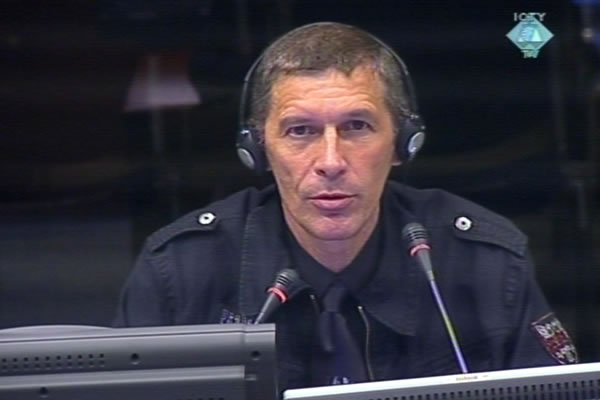Home
BULLET AS REWARD IN OMARSKA
Ivo Atlija completed his evidence at the trial of Radovan Karadzic. The trial then continued with the testimony of a former prisoner of the Omarska prison camp. As the witness said, her day began with counting the dead bodies scattered in front of the notorious ‘white house’. The prisoners in Omarska in most cases died of torture, which was so terrible that ‘a bullet was sometimes a reward’
 Ivo Atlija, witness at the Radovan Karadzic trial
Ivo Atlija, witness at the Radovan Karadzic trial The trial of former Republika Srpska president for genocide and other crimes in BH continued with the cross-examination of Ivo Atlija, a Bosnian Croat from Brisevo near Prijedor. Last week he spoke about the attack of the Serb forces on the village on 24 July 1992. Sixty-eight people were killed in the attack, including the witness’s father, 14 women, two boys and four disabled persons.
Karadzic accused the witness of trying to ‘deceive’ the judges with his evidence. To corroborate his accusation, Karadzic used a document from the Bosnian Serb Military Intelligence Service (VOS) in which it is noted that about 50 ‘extremists’ were located in the village of Brisevo where they were purportedly carrying out secret preparations for the war together with the Green Berets from the nearby Muslim villages. The witness dismissed the claim, saying there were no military formations in Brisevo at the time of the attack, except for the soldiers of the Sixth Krajina Brigade and the Fifth Kozara Brigade of the Bosnian Serbs. When Karadzic insisted that the document ‘strictly forbids unnecessary use of fire’, the witness replied that fire was indeed opened on anything that moved, including women and children.
In his replies to Karadzic’s question, the witness explained that he, his father and several other men and women took shelter in the basement of a house during the attack. Serb soldiers told his father and Pero Dimac there was no need to hide anymore and that they could all go back to their homes. The father ‘unfortunately believed this’ and went home, Atlija said. Soon afterwards, Atlija’s father was killed in front of his house. Pero Dimac was ordered to run towards the forest and was then shot in the back of his head at close range. The witness dismissed Karadzic’s suggestion that Dimac was trying to flee. As Atlija explained, he witnessed the killing from the distance of just fifteen meters.
After Ivo Atlija completed his evidence, protected witness KDZ 080, woman from Prijedor, began her testimony. The witness’s written statement which contains relevant parts of her previous evidence at the Kvocka and Brdjanin trials in 2000 and 2003 respectively was tendered into evidence. When Serb forces took over power in Prijedor in late April 1992, the witness was first not allowed to go to work and in June 1992 she was arrested and detained in the Omarska prison camp.
Prosecutor Caroline Edgerton read out the summary of the statement. According to the summary, the witness’s day in Omarska began with counting the dead bodies around the notorious ‘white house’. In the statement, the witness described the beatings, humiliation and killing of Omarska prisoners. This included physical and sexual abuse of women. The witness also described the interior of the prison camp and the visit of Radoslav Brdjanin, Stojan Zupljanin and other Serb officials to Omarska in July 1992.
In August 1992, the witness was moved to Trnopolje. She ‘paid’ to leave Prijedor by signing a document ceding all her property to the Serb Autonomous Region of Krajina.
At the beginning of his cross-examination, Karadzic strove to show that Keraterm and Omarska were in fact ‘investigation centers’. The witness disagreed: people are not abused and killed in investigation centers, while in Omarska it was an everyday occurrence. According to the witness, they were ‘concentration camps’ where people in most cases died of torture so terrible that ‘a bullet was sometimes a reward’.
Linked Reports
- Case : Karadzic
- 2011-10-20 SUFFERING OF CROATS IN BRISEVO
- 2011-10-06 WITNESS: NO JUSTIFICATION FOR CRIMES IN KLJUC
- 2011-10-05 CRIME AND PUNISHMENT
- 2011-10-27 HORRIBLE CONDITIONS IN ‘BEAUTIFUL CENTER’ IN OMARSKA
- 2011-10-28 KARADZIC: SDA SECRETLY PREPARED FOR WAR AGAINST SERBS
- 2011-10-31 RADOSLAV BRDJANIN’S OFF-COLOR JOKES
